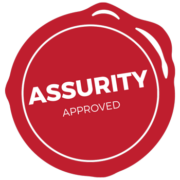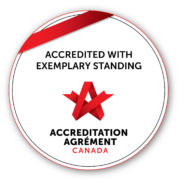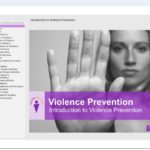Bulletin #7 – Safety Culture – 1

Things you should know about…SAFETY CULTURE
Safety Culture is one of our Accreditation Quality and Safety Themes. It focuses on creating a culture of safety within Menno Place. Within the Safety Culture Theme there are four Required Organizational Practices (ROPs) that must be met to successfully complete Accreditation which will occur October 22 – 25, 2018.
PART 1: In this Education session we will review two ROP’s. They are:
ROP 1 Accountability for Quality
Surveyor Question: Does the Menno Place Board have a demonstrated commitment to quality performance in the organization.
Answer: The Board of Menno Place demonstrates a clear commitment to quality by having it as a standing item on the agenda of its meetings.
Evidence: How do we do this?
- The Board is engaged in overseeing quality in order to ensure that quality performance continually improves. Governing bodies are accountable for the quality of care provided by their organizations. The Board is aware of key quality and safety principles in order to understand, monitor, and oversee the quality performance of the organization.
- The Board has a clear commitment to quality as evidenced by having it as a standing item at each meeting.
- The Leaders and Board review a number of indicators on a regular basis.
- Resident safety is embedded in the Menno Place strategic plan.
- Menno Place’s quality performance indicators are directly linked to strategic goals and objectives. Knowledge gained from the review of quality performance indicators (i.e. data collected on number of falls, pressure ulcers, restraints, sick time, injuries etc.) is used to set the agenda, inform strategic planning, and develop an integrated quality improvement plan. Resource allocation may be determined by priorities arising out of evaluation of quality performance.
- Menno Place has a Quality Improvement and Risk Management Committee (QIRM). This committee consists of Senior Leaders and Directors and Board members and meets quarterly. The QIRM committee reports to the Board.
ROP 2 Client Safety Incident Disclosure
Surveyor Question: Can you describe the Menno Place policy and process of disclosure?
Answer: Menno Place has a policy “Disclosure of Harm or Near Miss” AP 2.28 and it is available on Share Point. The policy outlines the standard steps to take after an unusual incident occurs as well as guidelines to ensure discussions with residents and families are carried out in a sensitive and thorough manner and that support mechanisms for residents and staff are available.
Evidence: How do we do this?
- Disclosure is the process used by Menno Place to inform a resident and/or their family of a specific harmful event. During this process the implications of that event are discussed if expected during the course of the resident’s care. Part of the process involves support for residents and staff as well.
- Menno is committed to honest and open communication with residents and families when harm occurs. This may include a fall with injury, medication error, unexpected death, missing resident, theft, etc.
Content of Disclosure:
- The steps taken and the recommended options and decisions in the ongoing care of the resident (e.g. changes to care plan as applicable).
- An expression of regret – expressing appropriate regret about their circumstances.
- A brief overview of the investigative process that follows, including the appropriate timelines and what can be expected to be learned from the analysis.
- An offer of future meetings, including key contact information.
- A time for questions and the answers given.
- A commitment to keep the resident/HCDM/family updated and report what process improvements occur, and when known.
- A transfer for the resident to another Practitioner should they request that action.
- Examples of support mechanisms for residents include:
- Identifying further any resources needed to assist the resident’s and/or HCDM/family’s understanding and coping with disclosed event, e.g. family members, interpreter, translation, etc.
- Resident’s/family’s choice of support person at the disclosure discussion
- Counseling, Social Workers and/or spiritual services
- Information on how to access more detailed long-term support
- Examples of support mechanisms for service providers include:
- Discussion with manager or another leader or referral to other support identified by the staff person within the organization
- Union, association or Professional Association (i.e. CRNBC, CLPNBC)
- Employee Family Assistance Program
- Consultation with professional association prior to disclosure discussion (i.e. CLPNBC, CRNBC, etc.)
- The person most involved with the safety event is responsible for recording a complete, accurate, and factual account of the disclosure discussion(s) in the resident’s health record, including objective details of the event, medical intervention and resident response and notification of the physician(s). Those involved must be mindful of their obligations towards privacy of information.
Stay tuned:
- Part II on Safety Culture will be coming out later this month
Quiz:
- What is Menno Place’s definition of Resident & Family Centered Care?
Find the answer in Bulletin #5 on the MP Newsletter and submit your answer at the reception desk in order to be eligible for a draw.




